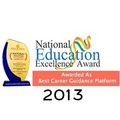Your CV (curriculum vitae) is your face or representative before recruiters/potential employers. An informative and well-organized CV will always impress recruiters. However, and in too many cases to count, skilled job-seekers find it challenging to write a good CV on their own. The primary reason is that these individuals don’t know the most important elements a CV should contain.
You can use a professional template with carefully arranged sections you can personalize by filling it out and submitting it. Using such a template can make you create an impressive CV on the fly to suit whatever job you’re applying for.
But knowing the elements a good CV should contain is equally crucial. In addition, grabbing a recruiter’s attention is essential as this is the gateway to an interview.
Therefore, here are the most important elements a CV should always contain, regardless of the job you’re applying for:

Name and contact information
Your first name and surname are required here, with no middle name. Add any professional job title you have earned with your name. These vital details are the title of your curriculum vitae. Don’t ever mention the words ‘curriculum vitae’ on your CV.
Write your contact information right beside your name and professional title. That should be your phone number and email address. You don’t need to add your full residential address as it is considered a thing of the past. But mention your location, i.e., your town and country of residence.
Personal profile
This is also known as a personal statement, professional profile, and personal profile. It has one primary purpose: to give recruiters/potential employers a quick view of everything about you.
This covers your profession, what you can bring to the table/role, and your career goals. It is a very brief section, not beyond five lines. But it must showcase your relevance to that particular job while making enough significant impact to convince prospective employers that reading the rest of your curriculum vitae will be worth it.
Core skills/competencies
This section helps you showcase the selection of qualifications and skills that make you a perfect fit for the new role.
The key skills or core competencies section should be beneath your personal profile. This is where you can write six to ten of your best attributes in bullet points. These signal immediately to the hiring manager or recruiter that you’re the person they are looking for.
The skills you possess could be soft or hard, awards or certifications, proficiency at using a wide variety of software or tools, etc. This section is responsible for optimizing your CV for ATS (applicant tracking system). Therefore, write it well.
Work experience/employment history
This section highlights your former positions of employment arranged in reverse-chronological order. This means the most recent role you filled must be at the beginning.
Include the dates of employment, job titles, names of the organization, and a line about your role for each job. Apply bullet points to your skills, duties, and achievements. The work experience you have gained in these roles serves as a vital component of your curriculum vitae.
This is because any hiring manager reading this section understands your skills/experiences based on your work history.
Let your most recent role take up enough room since it is presently the peak of your career.
Other elements that should be included in your CV include:
- Your interests and hobbies
- Education
- Memberships and professional affiliations, etc.
This information is essential and will help you get the
Conclusion
These important and basic elements of a CV will help you properly share factual information about yourself. In addition, the ability to develop an excellent CV by yourself at the drop of a hat inspires confidence.
However, you may consider using a well-designed CV template. Customize it by filling in all the most important elements the curriculum vitae should contain.






